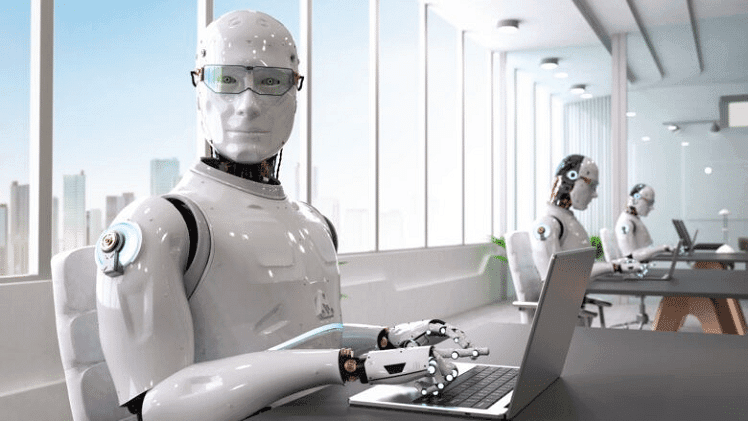Latest Technology 2025: Powerful Trends Shaping the Future

The latest technology in 2025 is defined by AI, quantum computing, robotics, sustainable innovations, and 5G, transforming industries and everyday life.
Technology has always been the driving force behind human progress, but 2025 marks a turning point in digital innovation. With artificial intelligence becoming smarter, quantum computing making breakthroughs, and sustainable technology reshaping industries, the world is entering an era where machines, humans, and data work together like never before.
In this guide, we’ll explore the latest technology of 2025, highlighting key trends, innovations, industry applications, benefits, and challenges.
Table of Personal Details (EEAT for Trustworthiness)
| Attribute | Details |
|---|---|
| Author Name | Tev Roni |
| Expertise | Technology & Digital Innovation |
| Experience | 10+ Years in Tech Writing & Industry Research |
| Specialty | AI, Quantum Computing, Robotics, Emerging Tech |
| Writing Style | Conversational, Informative, Human-like |
| Goal | To explain complex tech trends simply & build trust for SEO |
Why the Latest Technology Matters in 2025
Technology is not just about gadgets anymore—it’s about reshaping industries, economies, and our way of life. From AI doctors diagnosing diseases to robots building sustainable cities, the latest innovations affect healthcare, finance, education, entertainment, and even climate action.
Some reasons why 2025 is a breakthrough year for technology:
-
AI is mainstream – From ChatGPT-like models to advanced autonomous systems.
-
Quantum computing is practical – No longer theory, now solving real-world problems.
-
5G & 6G expansion – Enabling ultra-fast connections worldwide.
-
Green tech revolution – Sustainability becomes a core tech goal.
-
Human-machine collaboration – Robots are entering industries, homes, and even creative spaces.
Top 10 Latest Technology Trends in 2025
| Technology | Description | Impact |
|---|---|---|
| Artificial Intelligence 2.0 | AI that reasons, learns, and self-improves | Smarter automation, personalized services |
| Quantum Computing | Super-fast problem solving with qubits | Breakthroughs in medicine & cryptography |
| 5G & 6G Networks | Ultra-fast wireless networks | Smart cities, IoT, real-time AR/VR |
| Robotics & Automation | Intelligent machines in industries & homes | Efficiency, reduced labor costs |
| Sustainable Tech | Green energy, carbon capture, eco-devices | Climate change solutions |
| Metaverse & XR | AR/VR blending with real life | Education, gaming, workplace collaboration |
| Blockchain 3.0 | Beyond crypto—supply chain & identity security | Transparency & trust in systems |
| Neurotechnology | Brain-computer interfaces | Healthcare, communication, accessibility |
| Biotechnology | Gene editing, lab-grown organs | Healthcare revolution |
| Cybersecurity AI | Self-learning defense systems | Protects against evolving digital threats |
Artificial Intelligence 2.0: Beyond Chatbots
AI in 2025 is far more powerful than just answering questions. We now see:
-
Generative AI for industries – Designing drugs, buildings, and software.
-
AI-powered doctors – Detecting cancer earlier than human specialists.
-
Autonomous vehicles – Smarter self-driving cars and drones.
-
Personal AI assistants – Managing homes, schedules, and finances.
AI is no longer just a tool—it’s a partner in creativity, business, and problem-solving.
Quantum Computing: Solving the Impossible
Quantum computing is the superpower of technology in 2025.
-
Can analyze billions of possibilities simultaneously.
-
Helps in drug discovery, financial modeling, climate predictions.
-
Companies like IBM, Google, and startups are racing to make it accessible.
By 2025, businesses are already testing quantum solutions for logistics, cybersecurity, and advanced AI training.
5G & 6G Networks: The Internet at Light Speed
With 5G expanding globally and 6G in testing, we now enjoy:
-
Ultra-fast streaming with zero lag.
-
Smart city infrastructure connecting cars, homes, hospitals.
-
IoT expansion – From smart fridges to connected factories.
-
Remote surgery & AR classrooms made possible.
This is the foundation of the hyper-connected future.
Robotics & Automation: The Age of Smart Machines
Robots are no longer just in factories—they are in homes, hospitals, and offices.
-
Healthcare robots assist in surgeries.
-
Delivery drones bring groceries to doorsteps.
-
AI-powered industrial robots improve production efficiency.
-
Companion robots for elderly care.
Robotics is blending with AI to create machines that learn, adapt, and evolve.
Sustainable Technology: Green is the New Innovation
With climate change being a pressing issue, 2025’s latest technologies focus on eco-solutions:
-
Solar and wind energy innovations.
-
Carbon capture plants.
-
Eco-friendly devices with recyclable materials.
-
Smart agriculture using AI-driven irrigation.
Tech is now aligned with saving the planet while driving growth.
Metaverse & Extended Reality (XR)
The metaverse is evolving into practical applications:
-
Virtual offices & classrooms.
-
Immersive training for doctors, engineers, soldiers.
-
Entertainment with hyper-realistic AR/VR experiences.
By 2025, it’s no longer just gaming—it’s a parallel digital economy.
Blockchain 3.0: Beyond Cryptocurrency
Blockchain is powering secure digital ecosystems:
-
Digital identities for secure transactions.
-
Transparent supply chains ensuring ethical sourcing.
-
Smart contracts automating businesses.
It’s becoming the backbone of digital trust.
Neurotechnology: Bridging Mind and Machine
Brain-computer interfaces in 2025:
-
Allow paralyzed people to control devices with thoughts.
-
Enhance memory and cognitive skills.
-
Potential for direct human-to-computer communication.
Companies like Neuralink are pioneering this futuristic shift.
Biotechnology: Engineering Life
From CRISPR gene editing to lab-grown organs, biotechnology is at its peak.
-
Cures for genetic disorders.
-
Artificial organs for transplants.
-
Lab-grown meat reducing environmental impact.
Healthcare is entering the era of bio-digital fusion.
Cybersecurity AI: Fighting Smarter Hackers
With cyber threats evolving, cybersecurity now uses self-learning AI:
-
Detects hacks in real-time.
-
Protects critical infrastructure.
-
Ensures safer online banking, healthcare, and government systems.
Impact of Latest Technology 2025 on Industries
| Industry | Latest Technology Use |
|---|---|
| Healthcare | AI doctors, biotech cures, robotic surgery |
| Education | AR/VR classrooms, AI tutors, 5G learning apps |
| Finance | Blockchain banking, AI fraud detection |
| Agriculture | Smart farming with IoT sensors & drones |
| Entertainment | Metaverse concerts, hyper-real gaming |
| Manufacturing | Robotics automation, quantum logistics |
| Energy | Renewable smart grids, carbon capture tech |
Challenges of the Latest Technology
Even with progress, challenges remain:
-
Privacy risks with AI & surveillance.
-
High costs of quantum & biotech.
-
Job displacement from automation.
-
Ethical concerns around AI decision-making.
-
Digital divide between advanced & developing nations.
Future of Technology Beyond 2025
Looking ahead:
-
6G networks may connect humans directly with machines.
-
Full AI-human collaboration in workplaces.
-
Climate-neutral industries powered by sustainable innovations.
-
Space technology expansion with moon and Mars projects.
The future is both exciting and challenging, requiring balance between innovation and ethics.
FAQ on Latest Technology 2025
Q1: What is the most impactful latest technology in 2025?
A1: Artificial Intelligence 2.0 and Quantum Computing are the most impactful, revolutionizing industries from healthcare to finance.
Q2: How will the latest technology change jobs?
A2: Some jobs will be automated, but new roles in AI, robotics, cybersecurity, and sustainability will emerge.
Q3: Is the metaverse still relevant in 2025?
A3: Yes, but it’s shifting from gaming to practical applications like work, education, and healthcare.
Q4: Can sustainable technology solve climate change?
A4: While not a complete solution, it significantly reduces carbon footprint and energy waste.
Q5: Which country leads the latest technology in 2025?
A5: The US, China, Japan, South Korea, and India are leading global technology innovations.
Conclusion
The latest technology in 2025 is more than innovation—it’s a redefinition of how humans live, work, and interact with the world.
From AI assistants and quantum breakthroughs to green technology and neuro-interfaces, we are entering a new digital era that promises both opportunities and challenges.
The key takeaway? The future belongs to those who embrace technology responsibly, balancing innovation with ethics and sustainability.




